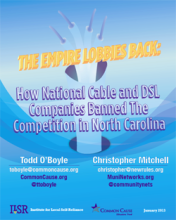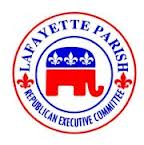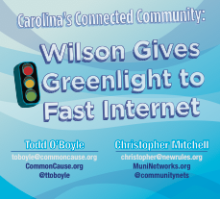
Fast, affordable Internet access for all.

Rather than subscribing to a service from a local telecommunications company, dark fiber allows the City of Boise access to strands of fiber optic cable between city buildings. In-house network engineers can choose the gear that is used to light the network, while maintaining complete control of protocol, platform and bandwidth, for improved flexibility. Fran Cantwell, an IT project manager for Boise’s Parks and Recreation Department, said that she noticed an immediate improvement using the City’s online mapping system. “Before, staff would wait for the system to slowly paint the screen,” Cantwell said. “After the dark fiber implementation, the maps load almost instantly. This greatly increased the efficiency of teams like Community Forestry, who refer to the maps and aerial photos daily.” The project, launched in June, took about four months to complete. Some city departments have reported a 3,000 percent increase in speed, according to Adam Reno, a Boise IT infrastructure services manager. Transmitting a 30-minute video once took two hours, but can now occur in as little as two minutes.The article provides some details on the cost, saying the City is paying Zayo $500,000 but it does not specify the term of the lease.
Kudos to Richard Downey, Village Administrator for the Village of Kronenwetter in Wisconsin. Mr. Downey reminded us that we have yet to write about the fiber network in Princeton, Illinois. While we have noted Princeton in our list of economic development successes, we haven't delved into the network that serves the city, the schools, and the business community.
Princeton is home to about 7,500 people and is located in the north central region of the state in Bureau County. They have their own electric, water, and wastewater utilities and began offering broadband connectivity in late 2003. We spoke with Jason Bird, Superintendent of Princeton Electric Department, who shared the network's story with us.
In 2003, the city’s largest electric and water consumer was also the largest employer. At the time, incumbents served the community with T1 connections. The manufacturing company moved to Mexico, taking 450 jobs with it. The community was stunned.
Approximately 6 months later, Ingersoll Rand, the community's second largest employer with about 300 jobs, also considered moving away from Princeton. While lack of needed broadband was not the only reason, the Ingersoll Rand CEO let community leaders know that it was one of the influential factors. The company liked being in Princeton, and the city would have been on the top of the location list if not for the sad state of connectivity. At the time, the only commercial option was unreliable T1 connections for $1,500 - $2,000 per month. If Ingersoll Rand moved, the community would experience job losses equal to 10% of the population. Community leaders needed to act and do it quickly.
To retain Ingersoll Rand, the City Council decided unanimously to go into the telecommunications industry. They issued an RFP and encouraged incumbents AT&T and Comcast to bid; neither were interested. (Interestingly, once Princeton let it be known that they were going to build the network without them, there were some local upgrades from both companies.)

In late 2006, Wilson, North Carolina, voted to build a Fiber-‐to-‐the-‐Home network. Wilson’s decision came after attempts to work with Time Warner Cable and EMBARQ (now CenturyLink) to improve local connectivity failed.
Wilson’s decision and resulting network was recently examined in a case study by Todd O’Boyle of Common Cause and ILSR's Christopher Mitchell titled Carolina’s Connected Community: Wilson Gives Greenlight to Fast Internet. This new report picks up with Wilson’s legacy: an intense multiyear lobbying campaign by Time Warner Cable, AT&T, CenturyLink, and others to bar communities from building their own networks. The report examines how millions of political dollars bought restrictions in the state that will propagate private monopolies rather than serve North Carolinians.
Download the new report here: The Empire Lobbies Back: How National Cable and DSL Companies Banned The Competition in North Carolina
These companies can and do try year after year to create barriers to community-‐owned networks. They only have to succeed once; because of their lobbying power, they have near limitless power to stop future bills that would restore local authority. Unfortunately, success means more obstacles and less economic development for residents and businesses in North Carolina and other places where broadband accessibility is tragically low.
It certainly makes sense for these big companies to want to limit local authority to build next-‐generation networks. What remains puzzling is why any state legislature would want to limit the ability of a community to build a network to improve educational outcomes, create new jobs, and give both residents and businesses more choices for an essential service. This decision should be made by those that have to feel the consequences—for better and for worse.
This story was originally posted on the ILSR website.
As I recently mentioned in my endorsement of Tubes by Andrew Blum, the book explains how a municipal fiber network helped to attract Google to town. Google sited its first "built-from-scratch data center" there, a $600 million investment according to Stephen Levy. According to Blum, it all started back in 2000 when the community got fed up with incumbent telephone company Sprint.
The Dalles was without high-speed access for businesses and homes, despite the big nationwide backbones that tore right through along the railroad tracks, and the BPA's big network. Worse, Sprint, the local carrier, said the city wouldn't get access for another five to ten years. "It was like being a town that sits next to the freeway but has no off-ramp," was how Nolan Young, the city manager, explained it to me in his worn office...
The Dalles was suffering economically due to its reliance on industrial jobs that were slowly disappearing.
This past spring, we introduced you to the small town of Leverett, in rural western Massachusetts. Having been largely ignored by the cable companies and left behind by Verizon's DSL service, the community overwhelmingly approved a town-owned network initiative in a May vote. They decided to finance the FTTH network with a 20-year bond measure.
The debt will be serviced by both the revenues from selling services on the network and a modest increase in property taxes estimated at 6%. Local leaders calculate the increase in property taxes will amount to less than the savings created by lowering existing DSL and telephone services.
Peter d'Errico, of the Leverett Broadband Committee gave us an update via email:
We issued a Request for Information (RFI) in September. Thirteen respondents gave us a wealth of information about the state of the industry and their readiness to engage with our project. Based on this information, together with our already-completed network design, we are now crafting an Invitation for Bids (IFB) for the network build and one year's maintenance. We expect to issue the IFB early January, with a return date in February, which will allow us to select a contractor shortly thereafter.
As soon as we issue the IFB, we will draft a Request for Proposals (RFP) for network operator / service provider. This will also be based on the information gathered from the RFI and our design.
We have initiated the 'make-ready' process with the local utility and phone company.
A November Gazette.Net article [requires login] on the project described some temporary setbacks due to Hurricane Sandy and an October storm that came through the area. In order to keep the project momentum going, the committee is gathering the pieces needed now and in the future. Early prep work will make launching the network that much easier. From the article:

Back in 2010, we reported on the municipal network in Spanish Fork, Utah. Back then, the utility innaugurated its telephone service, which completed its triple play offering. With recent discussion around Utah's UTOPIA, Spanish Fork is getting a second look.
A Cimaron Neugebauer, Salt Lake Tribune article, highlights the success of the Spanish Fork Communications Network (SFCN). When we last reported on SFCN, 60% of residents subscribed to its cable television and high-speed Internet service. Two years later, the numbers are even higher:
Spanish Fork runs its own municipal network to deliver telephone, cable TV and Internet services. The network has deep ties with the community and is popular with residents, nearly 80 percent of whom are customers.
"It’s exciting to live in community that invests in this kind of thing," resident Bret Bills said.
A combination of bonding and borrowing paid for the $7.5 million network including a municipal electric utility substation. Construction began in 2001. The investment continues to pay off:
Today, the city currently makes about $1 million a year profit from the service and its bonds of $600,000 annually will be paid off in 2015.
The network is a combination of fiber and coax cable. As is often the case, the community acted to fill the gap left by the failure of the private sector, involving the community along the way. From the SFCN website:
SFCN offers services that no other company will provide and can only be implemented by the public sector. The Spanish Fork Community Network has been established to serve the residents of Spanish Fork, not the interests of some large corporation. We have involved the citizens of Spanish Fork since the systems inception through a local Citizen's Ad Hoc Committee and it has ensured the system is design to meet the needs of Spanish Fork.
Unlike UTOPIA, SFCN is able to offer retail services, having been grandfathered in at the time of the crippling Municipal Cable TV and Public Telecommunications Services Act.
In August, we reported on the results of a report on UTOPIA by the Office of the State Auditor General of Utah. As you will recall, the results were less than favorable and presented more fodder for those opposed to municipal telecommunications infrastructure investment.
The same old arguments often rest on the financial investment in municipal networks - they are considered failures if they don't break even or make money. Pete Ashdown, founder of ISP XMission in Utah, addressed those arguments in the Salt Lake Tribune:
UTOPIA provides broadband service in 11 Utah cities. Today, communication infrastructure is no less critical than transportation, sanitation and clean water. Government is not a business, but the infrastructure it provides contributes to a robust business environment.
Consider how private businesses rely on government funded infrastructure. Why don’t entrepreneurs clamor to build the next generation of roads? Why don’t airline companies get off the public dole and build their own facilities? Why are sewer facilities so rarely handled by anyone else but the state?
Does effective infrastructure cost? Considerably. Does it make a profit? No.
For decades now, public service entities have contended with the argument that if they are "run it like a business" they will be more efficient, productive and even profitable. While lessons from the private sector may contribute to increased efficiency at times, government is NOT a business. Applying business tenets should be done sparingly and not in the case of critical infrastructure like electricity, roads, and yes, access to the Internet.
Gary D. Brown, who lives in Orem, shared a guest opinion through the Daily Herald and drew a similar parallel between UTOPIA's status and the business world:
We, the members of the Lafayette Democratic Parish Executive Committee, believe the project will enhance businesses, enrich our lives, and prepare our children for the future. With proper planning, future generations will see profits generated by this project stay in this community and improve businesses and lives for generations to come. Improving local communities has been the traditional purpose of the Democratic Party. With that in mind, we commend City-Parish President Joey Durel for his bold initiative to make this plan a success.A few weeks later, the Lafayette Republican Party endorsed the network [pdf] as well:

...
